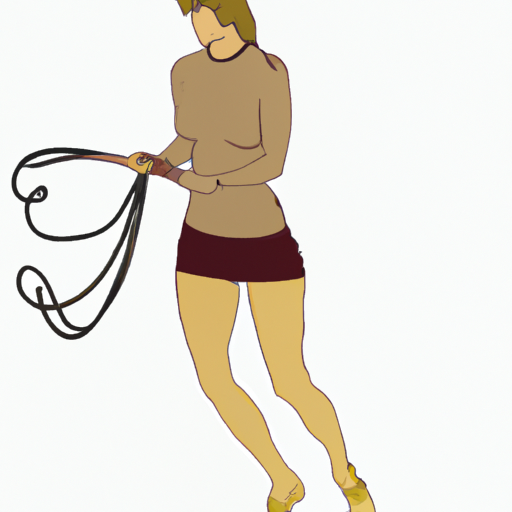In today’s society, there are countless career paths and professions available to individuals seeking to pursue their passions and interests. While some professions are more traditional and widely accepted, others may fall into a more niche category. One such profession that has gained attention and curiosity is that of a mistress. Although this line of work may not be widely discussed or understood, there are professional resources and training available for individuals interested in becoming a mistress.
Before delving into the specifics, it is important to note that the term ‘mistress’ refers to a person who engages in a consensual extramarital relationship with someone who is already in a committed partnership or marriage. This blog post aims to provide educational and informational insights into the resources and training available for individuals who are interested in pursuing this unconventional career path.
For those considering a career as a mistress, it is crucial to understand the complexity of the role and the ethical considerations involved. Engaging in an extramarital relationship is a personal choice that should be made with careful consideration and respect for all parties involved. It is important to prioritize open communication, consent, and emotional well-being when entering into such relationships.
While there is no formal education or certification required to become a mistress, there are resources available to help individuals navigate this unique profession. One valuable resource is online communities and forums where experienced mistresses share their knowledge and expertise. These platforms provide a space for aspiring mistresses to connect with others in the field, ask questions, and gain insights into the lifestyle and dynamics involved.
Additionally, there are books and literature available that explore the intricacies of being a mistress. These resources delve into topics such as emotional intelligence, communication skills, and maintaining boundaries in a consensual non-monogamous relationship. Some notable titles include ‘The Mistress Manual’ by Mistress Lorelei and ‘The Mistress’ Book: A Guide to the Art of Female Dominance’ by Mistress Dede.
For those interested in acquiring practical skills and knowledge, there are workshops and seminars conducted by experienced professionals in the field. These events provide a safe and non-judgmental environment for participants to learn about the nuances of being a mistress, including negotiation, power dynamics, and the importance of consent. These educational opportunities can offer valuable insights and guidance for individuals who wish to pursue this career path.
It is important to note that the role of a mistress requires emotional intelligence, empathy, and a deep understanding of the complexities of human relationships. Developing these skills can be a lifelong journey, and seeking support from therapists or relationship counselors can be beneficial for personal growth and self-awareness. These professionals can provide guidance on navigating the emotional challenges that may arise in this line of work.
In conclusion, while the profession of being a mistress may be unconventional, there are professional resources and training available for individuals interested in pursuing this career path. Online communities, books, workshops, and therapy can provide valuable insights and guidance for aspiring mistresses. It is essential to approach this profession with a deep understanding of the ethical considerations involved, prioritizing open communication, consent, and emotional well-being. Ultimately, individuals interested in becoming a mistress should approach this path with respect, empathy, and a commitment to personal growth. Click Here.
How does the reality of femdom differ from what is portrayed on TV or in porn?
In today’s society, where media influences our perceptions and shapes our understanding of various aspects of life, it’s important to differentiate between reality and the portrayal of certain concepts on TV or in pornography. One such concept that often gets misrepresented is Femdom, short for Female Dominance. Femdom refers to a sexual or lifestyle dynamic where a woman takes on a dominant role, both in and out of the bedroom, while the man assumes a submissive role. But how does the reality of Femdom differ from what is portrayed on TV or in porn? Let’s delve deeper into this topic and uncover the truth.
Firstly, it’s crucial to understand that Femdom is not solely about the sexual aspect. While TV shows and pornography tend to focus primarily on the sexual elements of Femdom, the reality is that it extends far beyond the bedroom. In real-life Femdom relationships, there is often a power exchange dynamic where the woman takes charge, not just sexually, but also in making decisions, setting boundaries, and establishing rules within the relationship. It’s about embracing and celebrating the woman’s dominance in various aspects of life, not just for sexual gratification.
Secondly, it’s essential to recognize that Femdom is consensual and based on mutual respect and trust. Unlike its portrayal in media, Femdom is not about force or abuse. It’s about two consenting adults engaging in a power exchange dynamic that brings them both pleasure and fulfillment. Trust and open communication are the foundations of any healthy Femdom relationship, allowing both partners to explore their desires, limits, and boundaries in a safe and consensual manner.
Another crucial aspect that differs from its portrayal in TV and porn is the emphasis on emotional connection and psychological dynamics. While media often highlights the physical aspects of Femdom, the reality is that emotional intimacy and understanding play a significant role in these relationships. Building a deep emotional connection, understanding each other’s desires, fears, and needs, is an integral part of Femdom. It’s about exploring the psychological aspects of dominance and submission and creating a fulfilling and balanced dynamic.
Furthermore, it’s important to debunk the myth that Femdom is solely for men who are weak or submissive. In reality, men who embrace their submissive side and find fulfillment in being dominated are often confident, successful, and assertive in their everyday lives. Femdom provides an outlet for them to explore a different side of their personality, to let go of control, and to find pleasure in surrendering to a powerful woman. It’s about breaking societal stereotypes and embracing diverse expressions of masculinity.
Lastly, it’s crucial to remember that Femdom is a personal and individual experience. Just like any other relationship dynamic, it varies from couple to couple. While TV and porn may present a certain image or narrative, it’s essential to acknowledge the diversity within Femdom relationships. Each couple defines their own boundaries, rules, and dynamics based on their unique desires and needs.
In conclusion, the reality of Femdom differs greatly from its portrayal on TV or in porn. It extends beyond the sexual aspect, emphasizing power exchange, trust, and emotional connection. Femdom is not about abuse or force but rather about consensual exploration of dominance and submission. It challenges societal norms and stereotypes, allowing individuals to embrace their desires and find fulfillment in a relationship dynamic that celebrates the woman’s dominance. By understanding the reality of Femdom, we can foster a more informed and respectful perspective on this often misunderstood concept.

